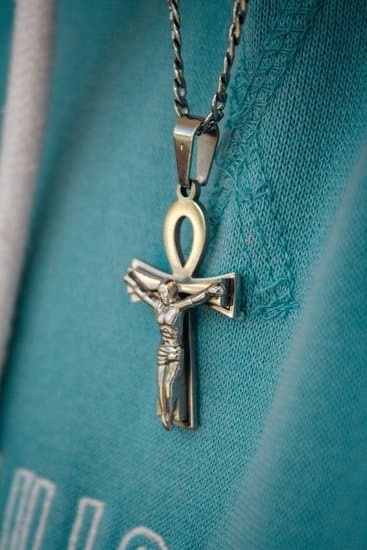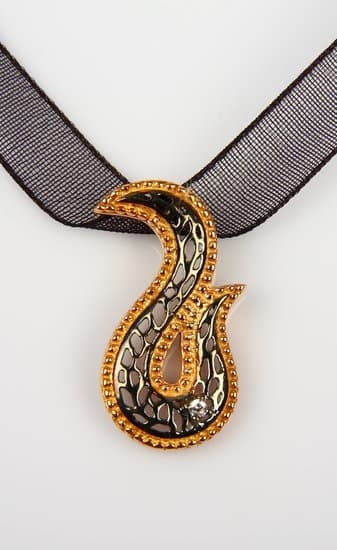Introduction
Jewelry is a timeless accessory that allows people to express themselves through their personal style. From the time of Ancient Egypt and beyond, jewelry was used as an adornment that conveyed status and power. Today, different styles and movements across cultures continue to expand on the versatility of jewelry. From minimalist designs to statement pieces and classic vintage-inspired designs, there are an array of options to choose from when it comes to expressing your unique style. Whether you’re attracted to delicate necklaces, custom rings or eye-catching bracelets, there is something for everyone in the vast world of jewelry trends.
The diverse range of styles and movements in the jewelry world today reflect changes in societal attitudes towards fashion and self-expression over time. During the Victorian era, for example, lengthy necklaces incorporated with romantic elements such as hearts were heavily favored amongst women who sought to create a romantic look. On the other hand, bold and vibrant tribal jewelry was more popular amongst men during this period as it represented strength and boldness. In modern culture, trends such as minimalism are gaining traction amongst individuals seeking subtle yet powerful statements with bold geometric shapes or plain metals set against precious stones or colorful accent details present on some pieces. Art Nouveau pieces have gained popularity amongst those looking to make a grandiose statement employing intricate carvings featuring kaleidoscopic colors & symbols inspired by nature while bohemian inspired free-spirited bracelet stacks that match any outfit have become favored by fashion conscious trendsetters everywhere. Whatever style you prefer – classic gold earrings or statement rings–there are endless variations of design details so everyone can find what they’re looking for in terms of both comfort level and expression.
In recent years jewelry design has also taken on environmental perspectives with materials like recycled gold being increasingly used for those wishing for mindful methods when curating their wardrobe staples
Art Deco Jewelry
Art Deco jewelry emerged in the 1920s following on from the turn of the century’s Art Nouveau style. It was a departure from cross-cultural theme based designs which had been popular since the beginning of modern jewelry design. Art Deco jewelry featured bold geometric shapes and revolutionary metals such as stainless steel and bakelite. In contrast to organic forms like flowers, “nature inspired” jewels were replaced with straight lines, smooth curves and symmetrical designs. Popular Art Deco motifs included chevrons, crosses, “zigzag” patterned pieces and sunburst jewel designs—all intended to represent futuristic technology and speed. Bright colors such as red, yellow and green also became vogue at this time; often used in combination with each other or dissonant materials like ivory set against gold. Jewelry makers created bespoke watches and cigarette cases alongside brooches, pendants, earrings and necklaces. During this period “flapper” styles began to emerge where semi-precious stones were either strung together in beads or cut into simple shapes crystallizing into ‘costume’ jewellery created by individual makers—helped along by accessible casting techniques introduced during WWI that meant anyone could own something made out of precious metals.
Jugendstil or Art Nouveau
Jugendstil or Art Nouveau is an influential artistic and architectural style that was popularized in the late 19th- and early 20th-centuries, particularly in central Europe, France, and the United States. Often referred to as “the new art for a new century,” the goal of Jugendstil was to create decorative objects and architecture that expressed modernity through organic forms and elegant use of materials. Although best known in installations such as retail stores, grand villas, and public monuments, Jugendstil was also a prominent influence on jewelry design during this period.
Popular motifs in Jugendstil jewelry design include curving lines, undulating shapes and asymmetrical composition. Many pieces were decorated with soft pastel colors along with accents of bright gold. Gemstones often featured semi-abstract designs inspired by nature (such as leaves or petals) or abstract patterns which flowed together using curved form rather than straight lines. Conforming to these popular elements of the modern movement, designers employed techniques such as enameling, engraving and piercing that emphasized delicate craftsmanship. In addition to emphasizing beauty through detail and modern aesthetics, the materials used reflected high quality standards: precious metals such as sterling silver and gold were popular choices, with some rare pieces including those featuring diamonds or other gemstones for more opulent looks.
Retro or Vintage Jewelry
Retro or vintage jewelry is from a specific era, often from the 1940s to the 1970s. The main influences for this style of jewelry were two major design movements: Art Deco and Mid-Century Modern. During this period, ornamental figures and geometrical shapes were popular in jewelry designs, as well as elements such as baguettes, marquise cuts and round brilliants. Many pieces feature intricate accents in yellow gold with platinum highlights against a white gold base. Aromatic materials like jadeite, turquoise and coral were found in many designs during this era along with diamonds set in yellow or rose gold. Retro and vintage jewelry was highly detailed and often had elaborate settings featuring milgrain edges or filigree borders. Though they may come with mixed metals or finishes, stay true to the original look by careful coordination of all materials used.
Boho Chic
The Boho Chic movement emerged during the early 2000s in direct response to design trends of the era. Shunning manufactured, off-the-rack designs that allowed for limited expression, Boho Chic pushed for a return to more organic shapes and materials produced with individual craftsmanship and excellent workmanship. Inspiration often hails from diverse cultural influences, either seen directly on the streets of Paris or through modern design influenced by ancient traditions around the globe. A foundation of silver is highlighted by semi-precious stones such as turquoise, tiger’s eye, garnet and turquoise – towards a one-of-a-kind item indicative of an exquisitely crafted varietal of accessory. It celebrates free spirit, freedom of thought, community engagement and a carefree nonconformist approach in juxtaposition to contemporary norms. Stylish necklaces featuring multiple strands strung with symbols inspired by natural meditations are popular choices offering boundless flexibility and subtle symbolism suited to both casual and formal occasions alike. Additionally, unusual ring settings featuring bold lines define individual expression with classically hued stones adorning most pieces as central elements. Intricate patterns punctuate endless options infusing traditional concepts into everyday living for an effortless trademark look that stands apart from other styles. Essential features have fed into homeware products stimulated by the distinctive style which resonates long after outfit staples have come and gone. Versatile in every respect, Boho Chic fosters inclusionary sentimentality as its reach continues ever broadening as it exclusively defines an innovative trend whilst challenging conventional tactics in favor of worldly appeal embraced across cultures in collaboration worldwide.
Minimalist Jewelry
Minimalist jewelry is a style of jewelry that emphasizes simplicity and clean lines. This style was popularized in the 1990s during the “less is more” trend. It is characterized by dainty pendants, geometric shapes, delicate chains and sparse materials. Minimalist pieces are ideal for people who have a subtle fashion sense- they play off traditional designs while still making a statement on their own. Many minimalist pieces feature simple metal charms or symbols with no frills. They may also be made from a single metal such as silver or gold, designed to be worn alone or layered for added impact. Additionally, minimal jewelry often draws inspiration from nature, art deco and modern art movements as well as primordial symbols such as triangles, stars and circles. Due to its emphasis on simplicity, minimalist jewelry can be worn for any occasion- from casual days spent lounging around town to black-tie events. By choosing minimalistic accessories, anyone can create an effortlessly stylish ensemble that speaks volumes without being overbearing. Minimalist stylings are further enhanced when paired with classic silhouettes like white tees and denim jeans paired with high heels, A-line dresses or tailored suits. Additionally, minimalist pieces work great when layered together as they easily elevate any outfit without overpowering it
Native American Jewelry
Native American jewelry has a long and proud history. It is an important part of their culture and traditions, and is often passed down from one generation to the next. Native American jewelry styles vary from tribe to tribe, based on regional culture, tribal beliefs, tradition, and available materials. Feather jewelry is popular among many Native American tribes because it holds spiritual significance for them that stretches beyond its beautiful craftsmanship. Among Plains tribes such as Sioux and Cheyenne, traditional jewelry pieces are commonly adorned with turquoise or shell beads and colorful quillwork which is created by weaving intricately dyed bird feathers onto skillfully crafted leather garments or into small quill boxes used for decorative purposes. Banded stone necklaces were also typical for men in Plains tribes, construction often out of a variety of stones including quartz and agates that reflect the colors of the earth itself. Navajo silverwork and Southwest turquoise jewelry is probably most widely recognized among contemporary Native American jewelry trends today due to its striking intricate detailing combined with precious metals and stones.
Contemporary Jewelry
Contemporary jewelry is defined as a unique type of modern jewelry design that takes existing styles and techniques from different eras to create something truly unique. This type of jewelry often incorporates traditional elements such as material, construction and symbols alongside with modern technology and materials. Contemporary jewelry incorporates trends from both the past and present and makes them collisional together. Often times, this style of jewelry re-interprets and reinvents classic motifs in bold new ways. Some popular styles and movements within the realm of contemporary jewelry are handcrafted pieces with chains, geometric compositions, Engraving & Intaglio, layering textures with alloys, vibrant colors with stones, carefully selected metals or combination of different materials to create statement pieces with a strong identity. The options for creating something new or refreshing are endless when it comes to contemporary jewelry design!
Conclusion
Jewelry has been used around the world since ancient times, with styles and movements often developing from different eras and cultures. From classic pieces to truly avant-garde designs, there is a perfect accessory for every wearer and occasion. Whether you prefer the traditional look of diamonds or want to create a daring statement with one-of-a-kind statement pieces, you are sure to turn heads and make a lasting impression. No matter what style moves you, jewelry serves as an iconic representation of your individual style and personality. With its ability to transform any outfit into something truly special, it’s no wonder jewelry has become such an essential part of fashion and style today. Jewellery can be a great way to express yourself in a subtle but meaningful way – allowing you to tell your story while looking fabulous at the same time! So get shopping today – whatever you choose, luxurious pieces of jewellery, whether vintage or contemporary will make all the difference when it comes to enhancing any look.

Welcome to my jewelry blog! My name is Sarah and I am the owner of this blog.
I love making jewelry and sharing my creations with others.
So whether you’re someone who loves wearing jewelry yourself or simply enjoys learning about it, be sure to check out my blog for insightful posts on everything related to this exciting topic!





